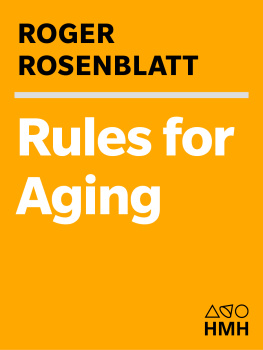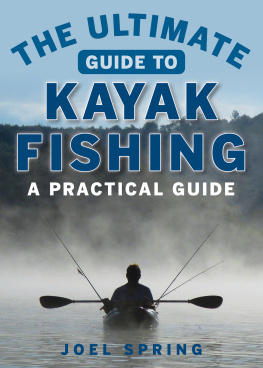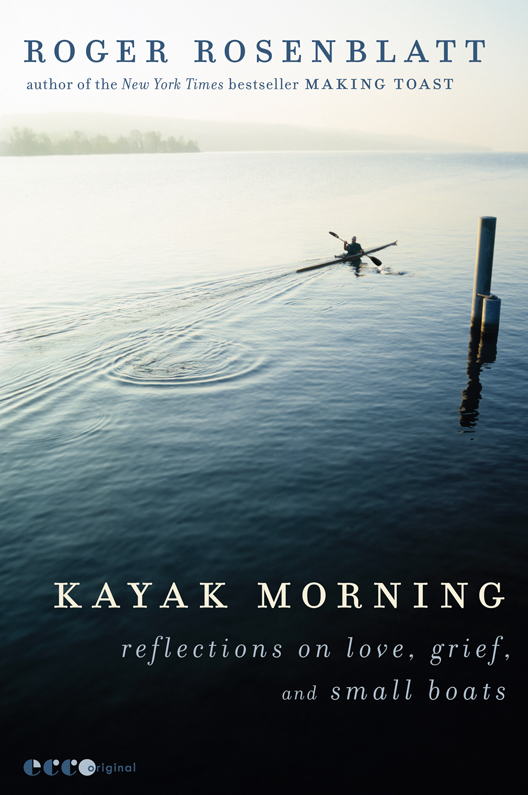Two and a half years after our thirty-eight-year-old daughter, Amy, died of an undetected anomalous right coronary artery, I have taken up kayaking. They say that people in grief become more like themselves. I have always been a loner, so going out in a kayak suits my temperament. It also offers a solitude that is rare for me these days, because when Amy died, my wife, Ginny, and I moved into her house in Bethesda, Maryland, to help our son-in-law, Harris, care for their three small children, Jessica, Sammy, and James. We spend nearly all our time in Bethesda, but we have also kept our home in Quogue, a summer village on the south shore of Long Island. It is not far from Stony Brook University where I teach English and writing. I commute between Bethesda and Quogue from September to June, and from June to September in Quogue, whenever time allows, I go kayaking.
Our oldest son, Carl, and his wife, Wendy, also have three children, Andrew, Ryan, and Nate. The family spends much of the summer together in Quogue, as we did when Amy was alive. When I am more sure of myself with my kayak, I will take the kids out with me one at a time, sitting them between my legs as I paddle. It would be cool to see the water from the waters point of view, says Sammy, a serious-minded child. Early in the morning, I go out by myself.
It is Sunday, June 27, 2010, just past dawn. At home, everyone is asleep, including our youngest son, John, who is visiting for the weekend. My boat scrapes on the public ramp. I dig my paddle into the pebbles in the shallow water, and push off.
Past a wooden dock jutting out into the creek and littered with parts of seashells, strafed by gulls. Smashed china on gray boards. Past the skeleton of a fish bobbing in the suds near a tuft of sea grass, thick as a sheeps head. Past the orange buoy and the wet brown sand. A neap tide settles like a defeat. The sky is a blue stripe, squeezed between two wide layers of white clouds. Over the canal it turns gunmetal gray. Elegies of water. Could rain.
I try to be careful about kayaking. I bought a good, sturdy boat, olive green. I got instructional books and took a couple of lessons. I have learned to sit straight and to hold the paddle with my hands between its center and the blades. I bring a bottle of water if I am to be out awhile. I spray on sunscreen. I wear my PFD, a life vest now called a personal flotation device. I rarely paddle farther than ninety feet from shore. Amy would have approved of such preparations and precautions. As a child she would pore over toy instructions. As a wife and mother, she read booklets on household appliances from cover to cover. As a pediatrician, she was tirelessly careful with her research and with her patients.
Until recently I was never like that. I thought I could figure out everything as I went about it, and simply plunged in. When I was eleven, our sixth-grade teacher, Miss Washburn, asked if anyone in the class played a musical instrument. She invited us to perform the following day. My aunt Julia had just given me a guitar for my birthday, on the day of Miss Washburns invitation. So I decided to bring in my new guitar even though I had not a single lesson in the instrument and had not even touched one until that day. The following morning, I stood in front of the class singing Red River Valley to the one major chord Id figured out the night before. My classmates were shaking and screaming with laughter. I must have thought that playing the guitar would simply come to me, like a miracle.
You cant always make your way in the world by moving up. Or down, for that matter. Boats move laterally on water, which levels everything. It is one of the two great levelers.
Where I go is Pennimans Creek, an inlet shaped like a wizards hat, squiggly on the sides and bent at the point. Not far from my home, the creek is about two hundred yards wide at the mouth, and a half mile long, one of several creeks leading from the village to the Quogue Canal. The canal leads to Shinnecock Bay and Peconic Bay, which extends east to Montauk at the tip of Long Island, and into the Atlantic. I venture no farther than Pennimans Creek, paddling up to where it meets the canal, and then paddling back to the narrow end. Not much of a trip, if measured in distance covered. Nothing, as compared to the Atlantic, which hooks into the Pacific. Nothing, as compared to the Pacific, which is sixty-four million square miles. With more practice and confidence, I eventually shall go into the canal and the bays, perhaps even as far as the ocean. For now, Pennimans Creek is my Atlantic and Pacific, quite big enough for me.
Still waters, dark waters, watercolors, waterproof, watermark, high-water mark, waterbird, to be in hot water, brackish water, white water, water main, water lilies, waterworks, waterfront, water bug, water cannon, water table, watershed, dead in the water.
The duck squats sits unmoving, a gray-brown shack. Ive never seen it used. Retired hit man, it sits with straw popping out on all sides in the wrong places, like old mens hair, thirty yards or so from the marshes and the shore on the east side of the creek. Above it rise trees of a hundred greens, thick as privet hedgesbright green, purple green, green descending to black, pale green, nearly white. White oaks, willows, pitch pines, tupelo trees whose branches stick out at a ninety-degree angle. One dead tree, the color of ashes, rises among them like a corkscrew. The trees are tall where the creek comes to a point and grow shorter and sparser where it widens at the canal. Three or four solitary trees appear on the promontory, at a distance from one another. One is flattened at the top like the desert date trees I saw in Sudan in 1992, when I was writing a story on the lost boys for Vanity Fair . Half hidden in the foliage are houses, summer places, most of them sprawling with additions. One of the larger houses has a flagpole on its lawn. I read the wind by the American flag flapping and clanking against the pole. Big houses. Substantial and confident houses. The creek rolls to them and away.
Elsewhere, great herds of bathers soon will gallop on the nearby ocean beach, calling out to one another in loud, patrician voices and complaining about a slice of swordfish scorched on the grill last night. They will organize their lives into committees under yellow-and-white beach umbrellas, while the sea rears up against its reins. On the creek I am the crowdI and the birds and the insects and the fish. Beneath me lie the gothic rocks in their dark museums. The minnows move in fits and starts. The banded killifish explode upward like sparks from a bonfire in the evening.
Powerboats ride at anchor on the west side of the creek, halfway between the canal and the public ramp. They belong to members of the Shinnecock Yacht Club, founded in 1887, merely a smallish house and a dock with a few slips. There are nine boats anchored in the creek today. None is oversize or showy, thus all are showy in the way of Quogue, which often makes a vice of modesty. The boats are still, as are the egrets that congregate on the dock. They stand together but seem not to acknowledge one another. Its difficult to determine their policy.
On the rocks above the public ramp, a rust-brown dinghy lies upside down, looking like a sea lion lolling in the sun. Nearby, a bush presents a small bouquet of pink and violet flowers. J. M. Synge had a phrase for such a picturethe splendid desolation of decay. The pilings of the various docks stick up like periscopes. The sky has turned gray and white, white clouds rising into the gray. The moon leaves a trace, as a chalky eye. White the pebbles. White the tips of the waves. White the weeds. Birds wheeling in the wind. The screak of gulls.











